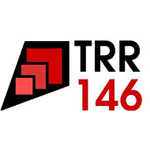
Seminar über Theorie der kondensierten Materie / TRR146 Seminar
Feb. 19, 2015 at
10 a.m.
in
Newton Raum, 01-122, Staudingerweg 7
F. Schmid
friederike.schmid@uni-mainz.de
P. Virnau
virnau@uni-mainz.de
L. Stelzl
lstelzl@uni-mainz.de
Characterization of Self-Assembled Monolayers on Metal Surfaces
Dr. Frederik Tielens (Laboratoire de Chimie de la Matière Condensée de Paris, Université Pierre et Marie Curie)
Self-assembled monolayers (SAMs) consist of a layer of functionalized long-chain molecules tethered to a solid substrate. SAMs have attracted significant interest of both the fundamental and applied scientific communities. Their presence as a “coating” on a surface is attractive in a number of applications due to the possibility to provide tuning of the surface properties by selectively modifying functional groups on the SAM.
Alkanethiols (CH3(CH2)nSH) and alkylthiolate radicals (CH3(CH2)nS∙) adsorption on Au(111) surface is one of the most studied and best-known SAM systems, but also other bioorganic molecules such as amino acids organize at the surface. The nature of the corresponding structure at the surface has been controversial for a long time, as well as other aspects such as the adsorption site on which the thiol chain is anchored, and if the thiol adsorbs by S-H bond breaking process or not. Experimental studies shed some light on both questions, indicating that surface thiol species are attached to Au adatoms, rather than Au atoms in such a bulk-terminated layer, and that it is the movement of these Au-adatom-thiolate moieties that order to produce the SAM structure. Still, some questions remain unsolved such as: At which coverage does this happen, and for which chain length? What is the influence of the presence of defect sites (vacancy and adatoms) on the S-H bond breaking process? The thiols adsorb in a laying down geometry at low coverage, but at which coverage do they straighten up or stand up? In this context we will show here a series of results on the characterization of alkyl thiol SAMs investigated in detail by means of periodic density functional calculations.